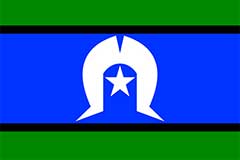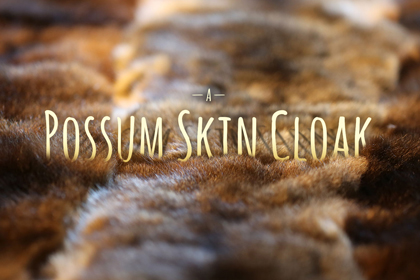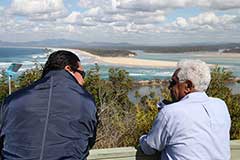
January 26 1938 was the 150th anniversary of the landing of the First Fleet in Australia, for some a day to celebrate, for others a day to mourn. For those who celebrated there was a parade, a re-enactment of the arrival of the First Fleet (Aboriginal men from Menindee acted as the original Port Jackson mob) and lots of partying.
Those who mourned, were kept waiting until the parade passed by before they could march in 'silent protest from the Town Hall to the Australian Hall in Elizabeth Street, …they weren’t allowed in by the front door – they had to come in through the back'7. On that hot January day members of the APA wore formal black dress as a sign of grieving, the men in thick worsted suits.
With the sesquicentenary parade delaying the marchers for so long, the meeting, which was titled "Australian Aborigines Conference : Sesqui-centenary : Day of Mourning and Protest to be held in The Australian Hall, Sydney on Wednesday, 26th January, 1938"8 did not start until 1.30 pm. "Aborigines and persons of Aboriginal blood" had been invited and about 100 people attended.
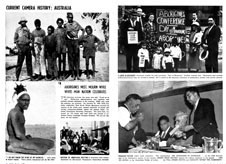
Jack Patten chaired the meeting. On his left sat Bill Ferguson, and on his right were Doug Nicholls, William Cooper and Jack Kinchela.
Some of the other people attending the conference were Margaret Tucker, Selina Patten (Jack’s wife), Pearl Gibbs, Jack Johnson, Mrs F. Ardler, Bert Marr, Frank Roberts, Tom Peckham, Henry Noble, Jack Kinchella, Bert Groves, Bert Marr, Ted Duncan, Robert McKenzie and Tom Foster.
Only four non-aboriginal people were allowed, two policemen and two pressmen to write or take photos. Helen Grosvenor served as minute taker.
The first speaker was Jack Patten, (The following quotes are extracts from The Australian Abo Call, No. 1, April 1938 p.2).
"On this day the white people are rejoicing, but we, as Aborigines, have no reason to rejoice on Australia's 150th birthday. Our purpose in meeting today is to bring home to the white people of Australia the frightful conditions in which the native Aborigines of this continent live. This land belonged to our forefathers 150 years ago, but today we are pushed further and further into the background. The Aborigines Progressive Association has been formed to put before the white people the fact that Aborigines throughout Australia are literally being starved to death. We refuse to be pushed into the background. We have decided to make ourselves heard. White men pretend that the Australian Aboriginal is a low type, who cannot be bettered. Our reply to that is, "Give us the chance!" We do not wish to be left behind in Australia's march to progress. We ask for full citizen rights, …"
(Mr. Patten): I will read the resolution as on the notice paper convening this Conference:

"We, representing the Aborigines of Australia, assembled in conference at the Australian Hall, Sydney, on the 26th day of January, 1938, this being the 150th Anniversary of the Whiteman's seizure of our country, hereby make protest against the callous treatment of our people by the whitemen during the past 150 years, and we appeal to the Australian nation of today to make new laws for the education and care of Aborigines, we ask for a new policy which will raise our people to full citizen status and equality within the community."
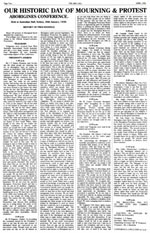
Mr. Connelly, (South Coast): "In 150 years the white men have taken away the hunting grounds and camping grounds of our people, and left us with nothing. We must have unity among ourselves or we will not succeed in the uplifting of our race. … On behalf of the Aborigines of the South Coast, I want to thank the men who have started this great movement of Aborigines Progress. If we are to succeed we must be united. Let us fight on to a successful end."9
The resolution was put to the vote and carried unanimously.
"After the meeting some of the group went to La Perouse, where Pearl Gibbs had prepared several memorial wreaths. These were floated out to sea in a symbolic gesture of mourning for the oppression and defeat of the Aboriginal nations which had began 150 years before."10
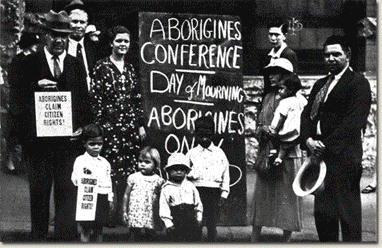
"it seems like today meant really different things to white people and to Aborigines. For white people it seems like celebratin’ progress, but for Aborigines it was about mournin’ everythin’ they've had to give up for white people's progress. I wonder if many white people understand where Aboriginal people are comin’ from, eh?"11
A large blackboard displayed outside the hall proclaims, "Day of Mourning". Leaflets warned that, "Aborigines and persons of Aboriginal blood only are invited to attend." At 5 o'clock in the afternoon resolution of indignation, protest, was moved, passed. (sic.) Source: Man Magazine, March 1938, p. 85.
Read more about the photograph in the article The People in that Picture by Suzanne Ingram, Koorie Mail, 14 July 2004, p. 26.
Footnotes
- Sydney Morning Herald 17 May 2000
- Australian Aborigines Conference [picture] : sesqui-centenary Day of Mourning and Protest to be held in the Australian Hall, Sydney ... on Wednesday, 26th January 1938
- Our historic Day of Mourning and protest: Aboriginal Conference. Held at Australian Hall, Sydney, 26th January, 1938, 'The Australian Abo Call', No. 1, April 1938, p. 2.
- Brenda, Palma, Save our site: the story of the campaign to save the Australian Hall, site of the 1938 Aboriginal Day of Mourning and protest, in 'Life in Gadigal country' / edited by Anita Heiss Marrickville, N.S.W. : Gadigal Information Service Aboriginal Corporation, 2002, p. 80
- Heiss, Anita, Who am I? : The diary of Mary Talence : Sydney, 1937, Sydney, Scholastic Australia, 2001, p. 166
